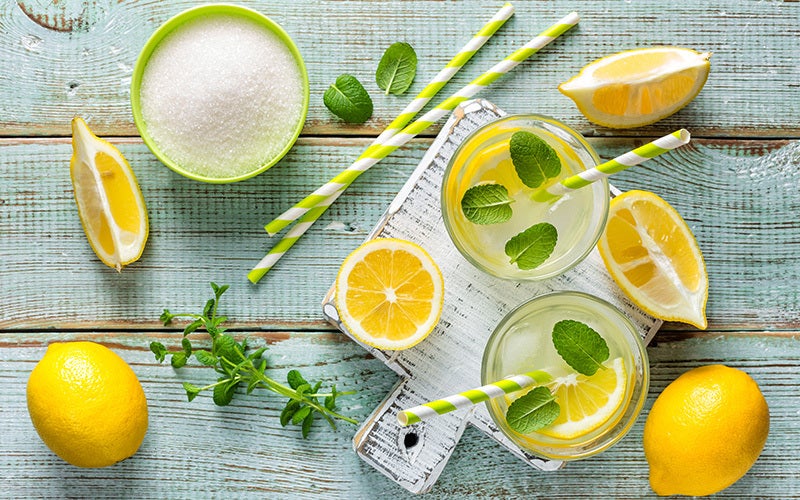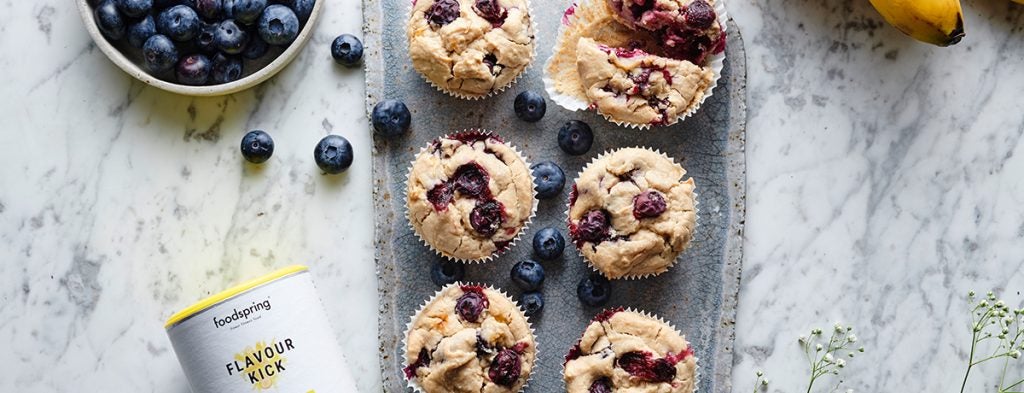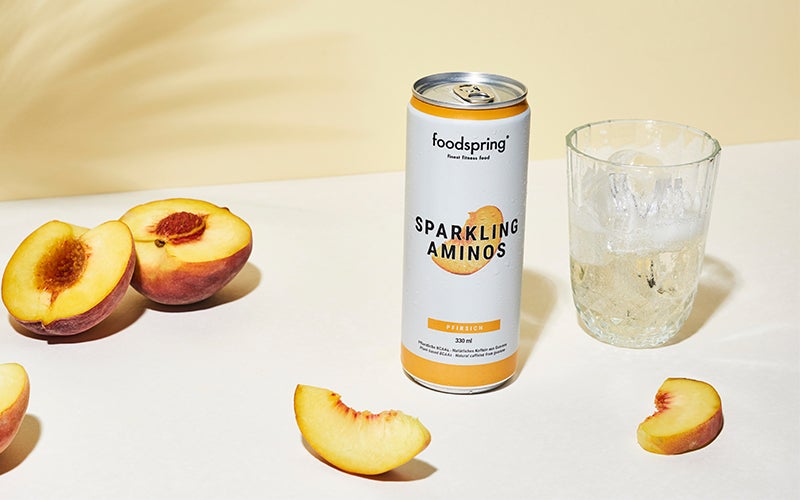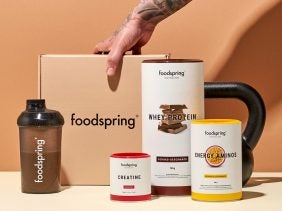Artificial sweeteners make the tastes you crave possible without the calories!
 ©ivandzyuba
©ivandzyuba
If you’ve ever looked at the nutrition information on a pack of gum, you know how confusing they can sometimes be. After all, what are the terms ‘aspartame,’ ‘saccharin’ and stevia supposed to mean if you’ve never heard of them before? In this article, we explain everything you need to know about all the different kinds of sweeteners, from artificial to natural.
What are sweeteners?
Sweeteners are identified on ingredient lists with numerical codes ‘Exxx’ also known as E-numbers. While they can be found in many different food products, they’re primarily used as alternatives to sugar in sugar-free or low-calorie candy, drinks, sauces, flavored dairy products and more because they have a strong, sweet taste with only a margin of the calories.
Sweeteners can be both artificial and natural
While aspartame – one of the best known and most widely used sweeteners – is an artificial sweetener, steviol glycosides – better known as stevia – are an example of natural sweeteners. It’s important to note that these substitutes often have a far stronger sweetness than traditional sugar and should only be used in small quantities.
In addition to having varying levels of sweetness, these sugar substitutes also vary in flavor. For example, stevia is considered to have a slightly bitter taste and sandy texture, unlike aspartame which has only a slight hint of licorice.
These are the sweeteners permitted in the European Union
Sweeteners are clearly regulated substances in the European Union. Before a new compound can officially be approved for use as a sweetener, the European Food Safety Authority (EFSA) subjects it to extensive testing. It can only be authorized for sale once it’s been found to be safe for consumption. Because these sweeteners are all much more powerful than table sugar, each sweetener is assigned an ADI value (Acceptable Daily Intake) during the safety assessment, which corresponds to the maximum amount that can be consumed daily per kilogram of body weight. Manufacturers use this value as a basis for developing their products.
The next time you look at the back of a pack of sugar-free gum, you’ll notice that the information includes both the function of the additive (in this case, the sweetening agent) and the E-number, both of which are mandatory to include in the European Union. But the rules in the EU aren’t the same everywhere. In the United States, for example, certain products may be available that aren’t in other countries because they have looser restrictions.
Below, you’ll find a list of all the natural and artificial sweeteners (along with their respective E-numbers) that are permitted in the European Union.
- Acesulfame K (E-950)
- Advantame (E-969)
- Aspartame (E-951)
- Aspartame-acesulfame salt (E-962)
- Cyclamate (E-952)
- Neohesperidine dihydrochalcone (E-959)
- Neotame (E-961)
- Saccharin (E-954)
- Steviol glycosides (E-960)
- Sucralose (E-955)
- Thaumatin (E-957)
The latest sweetener to be approved for sale in the EU was stevia in 2011. Ever since, steviol glycosides (the compound that’s extracted from the stevia plant) has been extremely popular with consumers. You’ll notice that it’s already in a lot of pre-made, unsweetened products, like candy, drinks, and cereal, but you can also buy it in its pure, powdered form to use in baking or cooking. But because stevia is about 300 times more sweet than industrial white sugar, you’ll need to make significant adjustments when you’re using it in a recipe.
Are sugar substitutes bad for your health?
The next time you see an E-number on an ingredient’s list, you’ll know right away that it represents a sweetener. But does that mean you should remove it from your shopping list?
There’s been a lot of research on whether or not sweeteners are dangerous to humans. Recent studies have shown that in general they’re not toxic as long as their ADIs are respected. They’re also strictly regulated by EFSA to ensure that products that use them don’t surpass the recommended amount. Contrary to popular belief, sweeteners are not considered carcinogenic.
Additionally, the EFSA regularly publishes updates about numerous healthy eating topics including the latest risk assessments of various sweeteners.
For example, the officials of the European Food Safety Authority recently concluded that aspartame – a sweetener that’s been the subject of a lot of debate – also isn’t harmful to the general population.
According to the scientists, sweeteners are better for your teeth than table sugar because they don’t contain the same compounds that cause cavities.
That doesn’t mean you should start throwing back alternative sweeteners with abandon. As with all things, practicing moderation and consuming only a small amount is key to preventing any negative side effects.
Is there a difference between sugar substitutes and sweeteners?
Most people don’t know the difference between sweeteners and sugar substitutes, often thinking they’re one in the same. It’s hard to differentiate between the two because both are sweetening agents that are categorized by E-numbers on nutrition information and ingredients lists.
But there is one small thing that sets sugar substitutes and alternative sweeteners apart: their chemical composition. Sugar substitutes are mainly polyalcohols that appear naturally as carbohydrates in fruits and vegetables. That doesn’t mean they’re completely natural, though. In fact, they are typically manufactured industrially to use as sweetening agents.

Erythritol is one example of a trendy sugar substitute that’s excellent for baked goods. This sugar alcohol is available in powder form and contains almost no calories. Xylitol, another popular sugar substitute, can also be found in the ingredient list of our protein brownies. For more information on this type of sweetener, see our article on sugar substitutes.
Sweeteners vs. Sugar: Which is healthier?
We’ve all wondered whether sugar or artificial sweeteners are healthier, especially when we’re scanning the soda aisle at the supermarket. Are you better off drinking regular or diet cola at the end of the day? While we usually favor our Sparkling Vinegar or Sparkling Aminos over soft drinks, it’s always good to know which option is better – sweeteners or conventional sugar?

Unfortunately, there’s no easy answer to that question. While diet cola made with alternative sweeteners doesn’t contain any calories, it can stimulate appetite and may indirectly cause weight gain.
Whatever you choose, it’s important to ensure that you don’t exceed the ADI. For sugar, that equals about 10 percent of your daily calorie requirements.
Sweeteners: Our conclusion
- Sweeteners are used in the food industry to sweeten low-calorie or calorie-free products.
- Sugar substitutes are identified on packaging by E-numbers and the term “sweetener”.
- Each sweetener has its own ADI (Acceptable Daily Intake) value to protect the consumer.
- Thanks to the safety tests carried out by the European Food Safety Authority (EFSA), sweeteners are considered safe for health when consumed in appropriate quantities.
- Sweeteners and sugar substitutes are both sweetening agents, but differ in their chemical composition.
Sources for this article
We at foodspring use only high-quality sources, including peer-reviewed studies, to support the facts within our articles. Read our editorial policy to learn more about how we fact-check and keep our content accurate, reliable, and trustworthy.
- Süßstoff-Verband e.V.
- AMBOSS Wissen für Mediziner
- Verbraucherzentrale Hamburg
- EFSA European Food Safety Authority
- NCBI Artificial sweeteners as a sugar substitute: Are they really safe?
































